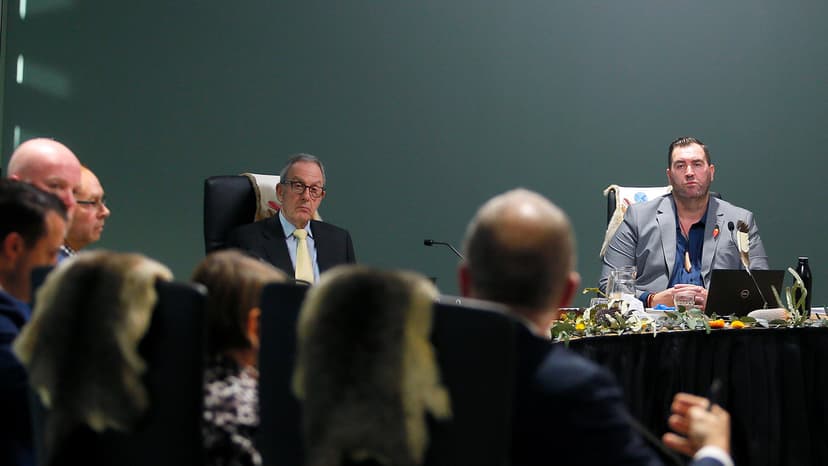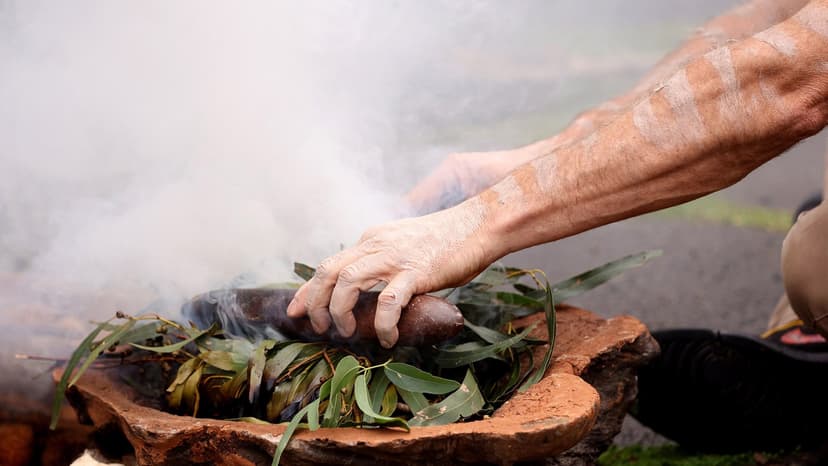Education
Educational inequality has impacted First Peoples since colonisation. Today, systemic racism, curriculum gaps, and under-representation continue to limit culturally safe and empowering education outcomes.
This page has been adapted from the Yoorrook Justice Commission reports, which are fully referenced. For referenced information please view the reports linked on this page.
sensitive material warning
Please be aware that this page may contain sensitive material. Read our self care guidelines to help manage any feelings of distress.
First Peoples and Victoria’s education system
The State systematically imposed substandard and limited education on First Peoples through oppressive laws, missions and reserves, and the total control of First Peoples’ lives. Education was also a tool of attempted assimilation. This pattern of educational inequity continues to the present day.
First Peoples students face structural impediments not experienced by others, with racism and lack of cultural safety undermining their educational success.
The Victorian school curriculum does not tell the full story of Victoria’s history, and many educators remain ill-equipped to teach compulsory curriculum to the required standard. First Peoples’ school experiences in Victoria are also negatively impacted by the critical under-representation of First Peoples educators, leaders and public servants in the education system.
Despite increased involvement in tertiary education, significant barriers to First Peoples’ achievement and to Victorian universities fulfilling their obligations to First Peoples remain. These include historical and continuing exclusion of appropriate First Peoples content and knowledges in university curricula, lack of engagement with First Peoples communities and Traditional Owner groups, and failure to deliver appropriate training to frontline professionals to enable them to provide culturally appropriate services to First Peoples.
Equality in education requires a foundational commitment to ensuring that the experiences of First Peoples students are meaningful, empowering, culturally safe and reflective of First Peoples’ culture, history and perspectives. This cannot be achieved through the production of even more policies and strategies that have either meaningless targets or no effective means to enforce them.
On this page you will find some of the responses Yoorrook has received as part of its inquiry into the schooling and tertiary systems of education in Victoria.
We weren't allowed to have playtime at the same time as the other kids.
- Uncle Henry AtkinsonEducation Timeline
This timeline traces key events in the history of First Peoples’ experiences with education in Victoria.
Early colonial policies promote missions and education as tools of assimilation; Assistant Protectors appointed.
Report of the Select Committee on Aborigines (British Settlements) recommended establishing missions to provide education, religious instruction and vocational training.
A government mission and school were established under missionary George Langhorne at a site now occupied by Melbourne’s Royal Botanic Gardens.
Assistant Protectors of the Aborigines appointed by the Colonial Office in the United Kingdom.
Colonial Office defines Protectorate duties, focusing on training First Peoples’ children
The Colonial Office outlined duties of the Protectors and the expectations of the Port Phillip Protectorate. Key aspect of the Protectorate system was the training of First Peoples’ children: ‘the boys to dig and plough’ and girls to ‘sew and cook and wash linen’.
Protectors arrived in Melbourne to begin their work in the Protectorate.
Langhorne mission and school (of which William Barak was a pupil) closed two years after being established.
Nerre Nerre Warren Aboriginal Station established, including school
Assistant Protector of Aborigines, William Thomas, and some Bunurong Boonwurrung and Wurundjeri men mark out land for Nerre Nerre Warren Aboriginal Station, which was gazetted in September 1840. A school was built on the site, with the first teacher arriving in November 1840.
Nerre Nerre Warren Aboriginal Station established with school
Assistant Protector of Aborigines, William Thomas, and some Bunurong Boonwurrung and Wurundjeri men mark out land for Nerre Nerre Warren Aboriginal Station, which was gazetted in September 1840. A school was built on the site, with the first teacher arriving in November 1840.
Loddon Aboriginal Station and school established
Assistant Protector Edward Parker, and some Dja Dja Wurrung people selected the site that became the Loddon Station (having moved from an earlier site). A school started here in January 1842 and continued after the Protectorate ended.
Merri Creek Aboriginal School and Protectorate established
Wurundjeri people, Bunurong Boon Wurrung people, other Kulin nation people and the Native Police moved from Nerre Nerre Warren Aboriginal Station to Merri Creek. A Protectorate and school was established at this site.
Sunday School for Kulin children established in Richmond
A Sunday School was established in present day Richmond for Kulin children. Whilst initially Kulin nation students attended the school, Thomas and Chief Protector Robinson began removing First Peoples’ children from Western Districts and Gunaikurnai Country and took them to the school. It closed in January 1851.
University of Melbourne founded (first university founded in the colony of Victoria).
Board for the Protection of Aborigines Established and Advocates for Training School
The Central Board Appointed to Watch Over the Interests of Aborigines was established by Parliament. In its first report the Board advocated for a school where First Peoples’ children could be trained as servants, although lack of government funding prevented these plans going ahead at this time. Taungurung children and adults attended school at Acheron and Mohican Stations.
School established at Coranderrk, as well as a children’s dormitory.
Neglected and Criminal Children’s Act Passed; Mount Franklin School Closed
The Colonial government passed the Neglected and Criminal Children’s Act 1864 (Vic). The Act was the first piece of Victorian legislation to define situations where children might be removed from their parents and provided for the establishment of industrial and reformatory schools for ‘neglected’ children.
School at Mount Franklin, attended by Dja Dja Wurrung children, closed by BPA and colonial government.
Framlingham Mission Closed in Attempted Relocation to Lake Condah
Framlingham Mission closed (two years after being established in 1865) as part of an unsuccessful attempt to move the residents to the new Lake Condah Mission.
Framlingham Mission Reopened After Resistance; Aborigines Protection Act Passed, Establishing BPA Oversight of First Peoples’ Education and Welfare
Framlingham Mission reopened after residents resisted government attempts to move them off.
The Colonial government passed the Aborigines Protection Act 1869 (Vic). The Act established the Board for the Protection of Aborigines (BPA) (previously the Central Board Appointed to Watch Over the Interests of Aborigines). The BPA was responsible for the ‘care, custody and education’ of First Peoples children. Schools continued to be established and run on missions and reserves.
Education Act Introduced Compulsory Schooling—but Excluded First Peoples
The Colonial government passed the Education Act 1872 (Vic). Victoria was the first Australian colony to offer free, secular and compulsory education to children, the aim to educate children of the working class, ensuring they became ‘good citizens’. The Act required children aged between six and fifteen to attend school but made no mention of First Peoples.
‘Half-Caste’ Act Expands State Control Over First Peoples Children
The Colonial government passed the Aborigines Protection Act 1886 (Vic) which came to be known as the ‘Half Caste’ Act, defining Aboriginality and outlining government intention to ‘merge a segment of the Aboriginal population with the general population’. Under the Act ’regulations or orders could be made’ in relation to apprenticing children of those identified by the BPA as ’half caste’, sending boys to work on farms and girls to work as servants. Mixed descent orphans were sent to the Department of Neglected Children.
Within four years, under this Act, over thirty First Peoples children had been placed in work, apprenticed or in orphanages. Subsequent regulations extended the BPA’s removal power to allow it to send any children of mixed descent, whether orphans or not, to the Department of Neglected Children or the Schools.
BPA Given Full Control Over First Peoples Children’s Education
The Colonial government passed the Aborigines Act 1890 (Vic) which made the BPA responsible ‘for the care custody and education of the children of [A]boriginals [sic]’.
The BPA closed the Framlingham mission and its school. Some residents resisted and stayed at Framlingham. Those First Peoples who remained at Framlingham or in the area, enrolled their children at the local state school. Some non-indigenous parents started withdrawing their children, refusing to ‘allow their children to attend the same school with the Blacks’.
All mission and reserve schools were made the responsibility of the Department of Public Instruction (Education Department)
First Peoples Children Excluded from Antwerp State School
Antwerp State School excluded First Peoples’ children. First Peoples children were again excluded from Antwerp State School in 1909 and 1915, being ‘forbidden’ to attend by the local health officer and parents in 1915 and 1916. This exclusion continued into the 1920s.
First National Aboriginal Welfare Conference held in Canberra
Commonwealth and State government representatives endorsed an assimilation policy.
Cummeragunja Walk-Off – Families Denied Access to Barmah School, Create Their Own
Cummeragunja walk-off strikers tried to enrol their children in the Barmah State School. Parents and local authorities had protested and worked to exclude First Peoples’ children from the school since at least 1926. In 1939 a deputation of strike leaders met with the head teacher and the Department of Education to ask for a school. The Department of Education refused and suggested instead that the children attend the school at Cummeragunja instead of opening a new school. First Peoples established their own school on the riverbank and protested the Victorian government requesting equitable access to schooling.
Abschol Scheme Launched to Support First Peoples in Higher Education
National Union of Australian University Students at the University of Melbourne initiated the Abschol scheme, seeking to increase Aboriginal participation in tertiary education.
The Victorian government passed Aborigines Act 1958 (Vic).
Government started to monitor First Peoples’ children’s school attendance and enforced the compulsory attendance provisions in the Education Act.
National Native Welfare Conference in Canberra.
This conference was led by the Commonwealth Government and included representatives from seven state and territory governments.
Australia ratified the 1960 UNESCO Convention against Discrimination in Education.
First national conference on Aboriginal Education
The first national conference on Aboriginal Education held at the Centre for Research into Aboriginal Affairs at Monash University.
Aboriginal Consultative Group’s report presented to the Commonwealth Schools Commission.
It recommended increased participation of First Peoples in education through increased appointment in education decision making roles, school councils, classroom teachers and support staff, better representation in curriculum and increased community involvement.
Victorian Aboriginal Education Consultative Group established
Victorian Aboriginal Education Consultative Group established (later the Victorian Aboriginal Education Association Incorporated (VAEAI) when incorporated in 1985).
The National Aboriginal Education Committee was created
The National Aboriginal Education Committee was created to ensure Aboriginal views were included in developing education programs and policies for Aboriginal people.
Establishment of Yappera Children’s Service Cooperative
Establishment of Yappera Children’s Service Cooperative, an early years’ service, in Thornbury.
The Koori Kollij program was established
The Koori Kollij program established in inner city Melbourne to teach ‘black studies, leadership and health programs’ and to address the failure of the mainstream school system.
Worawa Aboriginal College was established
Worawa Aboriginal College established by the late Aunty Hyllus Marius (Victoria’s only First Peoples school).
Victorian Aboriginal Community Services Association Limited (VACSAL) established.
Aboriginal Education Policy Task Force (national) appointed
Report of the Aboriginal Education Policy Task Force published.
Formal partnership between Victorian Government and VAEAI
Introduction of the National Aboriginal and Torres Strait Islander Education Policy
The Victorian Government forced the closure of Koori Kollij.
First Victorian Certificate of Education Australian history course included Koorie History
Royal Commission into Aboriginal Deaths in Custody report handed down. It found that low education levels were one of the underlying factors directly relating to high rates of Aboriginal deaths in custody. It made several education recommendations aimed at addressing inequalities and improving educational outcomes for First Peoples.
Victorian Liberal Government announce closure of Northland Secondary College
The government was ordered to reopen the school in 1995 following Northland community activism and a protracted legal battle.
Koorie Open Door School (KODE) program began
Eight KODE schools were opened around Victoria.
Tripartite Agreement
Tripartite Agreement made between Victorian Aboriginal Education Association Inc, Victorian Government and Commonwealth Government.
Koorie 2000 strategy launched
Department of Education and VAEAI launched the Koorie 2000 strategy that provided the framework for initiatives to improve educational outcomes for First Peoples students. The partnership with VAEAI was updated in October 2001 in Yalca: A Partnership in Education and Training for the New Millenium.
Wurreker Strategy launched
Introduction of the Indigenous Education (Targeted Assistance) Act 2000 to provide funding for programs aimed at improving educational outcomes for First Peoples’ students.
Yalca partnership on Education and Training for the New Millenium policy released
Victorian College of Koori Education established
First whole-of-government Victorian Indigenous Affairs Framework launched to address gaps between Aboriginal and non-Aboriginal Victorians.
Council of Australian Governments (COAG) pledged to halve the gap
Council of Australian Governments (COAG) pledged to halve the gap in reading, writing and numeracy achievements within a decade. Pavilion school founded.
Bradley Review of Higher Education
Department of Education and VAEAI commissioned Professor Peter Buckskin to review Victoria’s education strategies. The review findings resulted in the development and delivery of Wannik: Learning Together – Journey to our Future.
COAG approved the National Indigenous Reform Agreement that set out six Closing the Gap targets including three education targets.
Establishment of the Australian Indigenous Education Foundation to provide scholarships and support services to increase Indigenous participation in schools and universities.
First annual Closing the Gap report tabled in the Australian Parliament
Review of Higher Education Access and Outcomes for Aboriginal and Torres Strait Islander People
Final Report July 2012.
Early Years Koorie Literacy and Numeracy Program (Prep to Year 3) implemented
COAG agreed to add an additional target on school attendance.
Victorian Aboriginal Children and Young People’s Alliance founded
Victorian Aboriginal Children and Young People’s Alliance founded (originally auspiced under VACCHO (2015-2021) and Bendigo District Aboriginal Cooperative (2021-2022)).
Marrung: Aboriginal Education Plan 2016-2026 launched
Koorie Academy of Excellence expanded across the state under Marrung.
Extended Koorie Literacy and Numeracy Program (Year 4 to Year 6) implemented
Victorian Aboriginal Affairs Framework 2018-2023 (VAAF) launched
Victorian Aboriginal Affairs Framework 2018-2023 (VAAF) launched as the Victorian Government’s overarching framework for working with Aboriginal Victorians, organisations and the wider community to drive action and improve outcomes.
COAG committed to forming a genuine formal partnership with Aboriginal and Torres Strait Islander people to finalise the Closing the Gap Refresh ahead of the original plan expiring in 2018.
Australian Qualifications Framework Review completed
Australian Qualifications Framework Review completed, and final report published.
Toorong Marnong Higher Education Accord auspiced by VAEAI and the Victorian Vice-Chancellors’ Committee.
National Agreement on Closing the Gap signed
National Agreement on Closing the Gap signed by all Australian Governments, the Coalition of Peaks and the Australian Local Government Association.
Higher Education Standards Framework (Thresholds Standards) came into effect
Dhelk Wukang, Aboriginal Inclusion Plan 2022-2026 launched by Department of Education
This was the fourth Aboriginal Inclusion Plan outlining a commitment to strengthening Aboriginal inclusion, self-determination and cultural safety within the Department of Education including the Victorian Public Service and Government Teaching Service.
The Victorian Aboriginal Children and Young People’s Alliance registered as a company under the Corporations Act 2001
The Australian Universities Accord Final Report released
Inquiry into the state education system in Victoria (Legislative Council Legal and Social Issues Committee Inquiry).
Education Timeline
This timeline traces key events in the history of First Peoples’ experiences with education in Victoria.
Progress and Persistent Gaps in First Peoples Education
First Peoples in Victoria are engaging in education at increasing rates, particularly in early childhood and higher education. Despite this progress, they continue to experience significant disparities in achievement, retention, and representation across the education system.
From kindergarten to university, structural barriers like racism, underrepresentation, and insufficient support continue to impact learning outcomes. While enrolments are increasing, educational outcomes for First Peoples students remain inequitable when compared to non-First Peoples peers.
Although NAPLAN reading results for First Peoples students have improved since 2019, but numeracy results have declined. The following key statistics illustrate the current state of education for First Peoples in Victoria.
90.7% of eligible First Peoples children participated in Early Start Kindergarten in 2022, up from 44.6% in 2016.
In 2023, around 100% of eligible First Peoples children were enrolled in four-year-old kindergarten (compared to 92.3% of all eligible children).
By Year 9, 22.7% of First Peoples students needed additional reading support (vs. 8.2% non-First Peoples).
By Year 9, 26.1% needed support in numeracy (vs. 8.1% non-First Peoples).
In 2023, retention from Year 10 to 12 was 56.3% for First Peoples students (vs. 76.3% non-First Peoples).
90.4% of First Peoples students completed a senior certificate (VCE, VCAL or VET), compared to 97.2% of all students.
First Peoples in the Education Workforce and Universities
First Peoples remain significantly underrepresented in the Victorian education workforce, and while participation in tertiary education is increasing, completion rates lag behind those of non-First Peoples. Systemic barriers, lack of cultural safety, and limited institutional support continue to impact both staff and student outcomes.
First Peoples education workers dropped from 247 FTE (2021) to 200.7 FTE (2023).
In 2023, only 0.3% of Victoria’s education workforce identified as Aboriginal or Torres Strait Islander—well below the 2% target.
In 2023, 2908 First Peoples students enrolled in Victorian universities (just 0.65% of the total student population).
24.6% of First Peoples bachelor’s students left before second year (vs. 13.0% of non-First Peoples).
After 9 years, 54% of First Peoples students completed their degree, compared to 73.6% of non-First Peoples.
Education was used as a colonial tool of oppression
The State systematically imposed substandard and limited education on First Peoples through oppressive laws, missions and reserves, and the total control of First Peoples’ lives. Education was also a tool of attempted assimilation. Today, access to education remains one of the key methods of addressing systemic injustice.
First Peoples students face structural impediments to engaging in education.
In addition to economic and other inequalities that limit access, First Peoples students experience racism and a lack of cultural safety at school that undermines their success. First Peoples ability to access and engage in education is compromised a lack of support.
“It really stood out to me how other children, how they were treated compares to how I seen my cousins get treated and how I was treated."
- Jarvis Atkinson, Yorta YortaThe under-representation of First Peoples in the education workforce negatively impacts First Peoples students.
Under-representation of First Peoples in the educational workforce compromises schools’ cultural capability, to the detriment of all students. Yoorrook heard that a lack of cultural safety for First Peoples in the workforce, including the prevalence of racism and inadequate support, as well inadequate pathways for First Peoples students pursuing teaching qualifications and leadership opportunities is compounding this issue.
First Peoples require systemic change to achieve equal access to education.
In light of ongoing failures, accountability cannot be achieved through more and more policies and strategies that have either meaningless targets or no effective means to enforce them. Yoorrook heard that a deep-seated commitment to education equity is required.
There are still barriers to First Peoples achievement in tertiary education
First Peoples have a strong history and legacy of leadership and achievements in the tertiary education sector despite systemic and ongoing injustice. Yoorrook heard evidence that First Peoples continue to experience racism, lack of a cultural safety and the marginalisation of knowledge systems at Victorian Universities. Yoorrook also identified significant gaps in tertiary curriculum and teaching methods for key professions such as medicine, law and education as well as positive examples of innovation in the sector.
Submissions and evidence related to education
The incorporation of the true colonial history to date into the schooling and university curricular is crucial.
Yoorrook received evidence that incorporating First Peoples history, the impacts of colonisation, and systemic oppression must be incorporated into the Victorian Education system and university curricula, alongside policies that promote multidisciplinary, culturally safe service delivery.
First Peoples students are impacted by barriers to education including racism and a lack of cultural safety.
Yoorrook received evidence of impact of racism on First Peoples students and the need for anti-racist, culturally responsive teaching.
Systemic injustice limits First Peoples’ engagement with education.
Socio-economic injustices limit First Peoples engagement with education. Conversely, increased access to education helps to address other disparities. Yoorrook heard evidence that improved access to education is critical to insuring the prosperity, health, safety and wellbeing of First Peoples communities.
First Peoples participation in the education workforce is critical to student success.
First Peoples professionals in the education workforce in the teaching profession is an essential contributor to great educational success for children and young people and their families and communities. Yoorrook heard evidence of what is needed to grow the First Peoples workforce, both in face-to-face teaching and leadership roles.
First Peoples require structural and systemic change to achieve equal educational outcomes.
It is time to move beyond endless polices and frameworks that make little difference to the educational lives of First Peoples and lack accountability. Yoorrook heard evidence of what a system built on equity of access would look like.
Tertiary education must be made more accessible to First Peoples.
The tertiary education sector must address historic injustice and create pathways to success for First Peoples students.
Hearings held about education
Public hearings are official sessions where individuals or groups share their truths directly with the Commission.
These were held across Victoria and gave First Peoples the opportunity to speak publicly about their lived experiences.
Hearings were recorded and often included testimonies from Elders, community leaders, legal experts, and historians.
Education is central to the wellbeing of First Peoples, yet systemic failures continue to impact outcomes across all levels. Leaders and experts highlighted the vital role of the First Peoples education workforce, the need for targeted reform in higher education, and the importance of culturally safe and supported learning environments. State representatives acknowledged historical disadvantage and outlined efforts to address persistent inequities.
Public Hearings: 17 June – 21 June 2024
The purpose of these hearings was to gather evidence from the Minister for Mental Health, Minister for the Pervention of Family Violence, Minister for... more
Public Hearings: 13 June – 14 June 2024
The purpose of these hearings was to gather evidence from the Deputy Premier and Minister for Education, Secretary of the Department of jobs, Skills,... more
Public Hearings: 3 June – 7 June 2024
The purpose of these public hearings was to gather evidence from Aboriginal Community Controlled Organisations; the Vice-Chancellors of Monash Univers... more
Public Hearings: 27 May – 31 May 2024
The purpose of these public hearings was to gather evidence from Aboriginal Community Controlled Organisations, academics and the First Peoples' Assem... more
Firsthand Experiences: Education, Racism and Resistance
These videos share powerful stories from First Peoples students, educators and communities about racism in schools, systemic discrimination, and the fight for culturally safe and equitable education in Victoria.
“White kids didn’t like me simply because I was black.”
“The issue was that they didn't accept us for who we were. They thought we were dirty, lazy. I mean, you couldn't get more hard working people if you tried… Our parents, our Aunties, our Uncles, our cousins, they would be gone, you know, five, six o'clock in the morning, out picking fruit, out doing the work on the orchards.” Aunty Nellie Flagg shares with Commissioners firsthand experiences of racism at school.
Education recommendations
Explore some of the recommendations made in Yoorrook for Transformation on education.
Guided by First Peoples, Victorian universities must recognise and recompense First Peoples staff for the ‘colonial load’ they carry.
First Peoples’ exclusion from education began with colonisation
Yoorrook heard extensive evidence that First Peoples’ experience exclusion and marginalisation from every area of social life. Injustice across education, health, and housing, as well as exclusion from economic, political and social life, compounds present day disparities.
Explore other Focus Areas
The issues explored by Yoorrook are deeply connected—experiences in one area often impact outcomes in many others. Continue exploring the broader picture by visiting other Focus Areas below.
Support Resources
If you feel overwhelmed you can call 13 YARN (13 92 76) or Lifeline (13 11 44) for confidential support. For additional support options, visit support resources.
Reports and Recommendations
Read the official reports and recommendations of the Yoorrook Justice Commission.
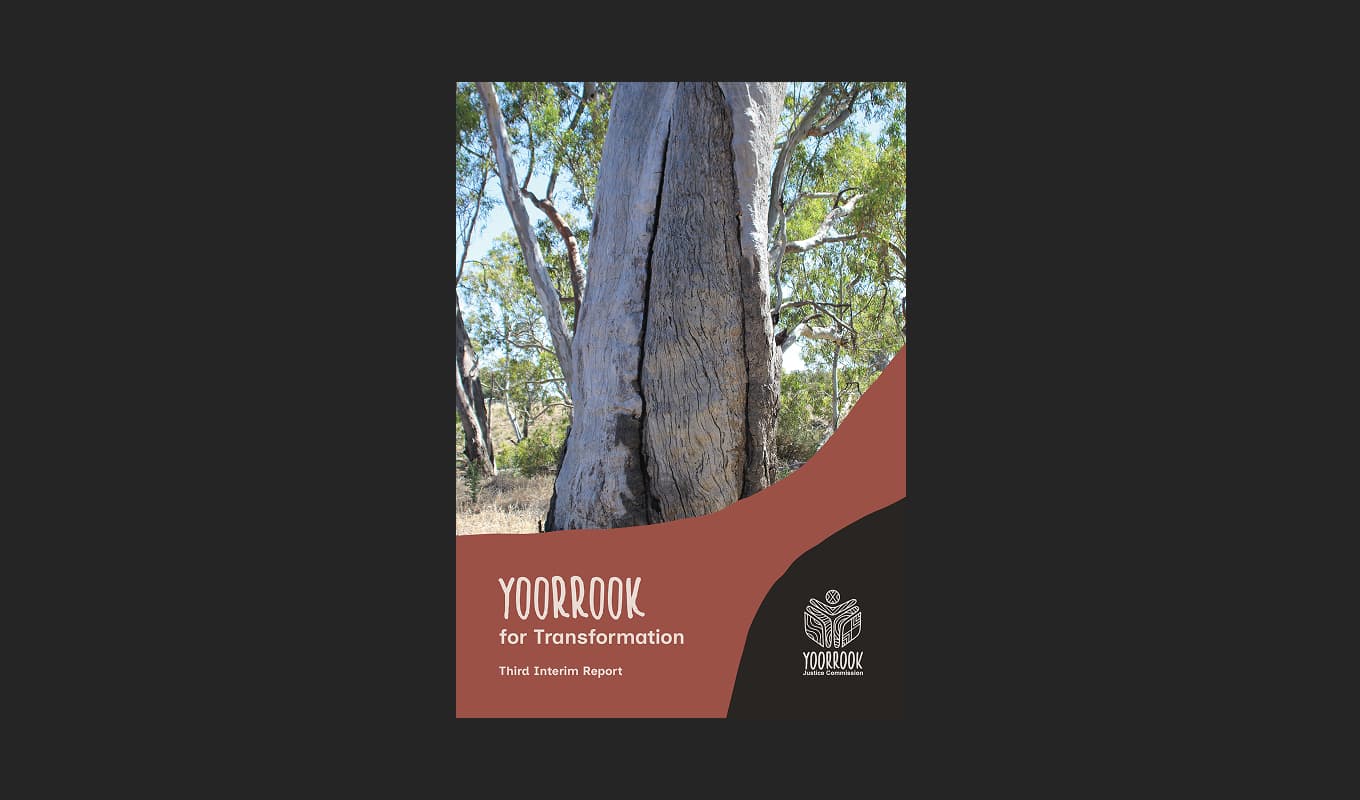
Yoorrook for Transformation
Third Interim Report: A five-volume comprehensive reform report presenting evidence and findings on systemic injustices, and specific recommendations for meaningful change to transform the future.
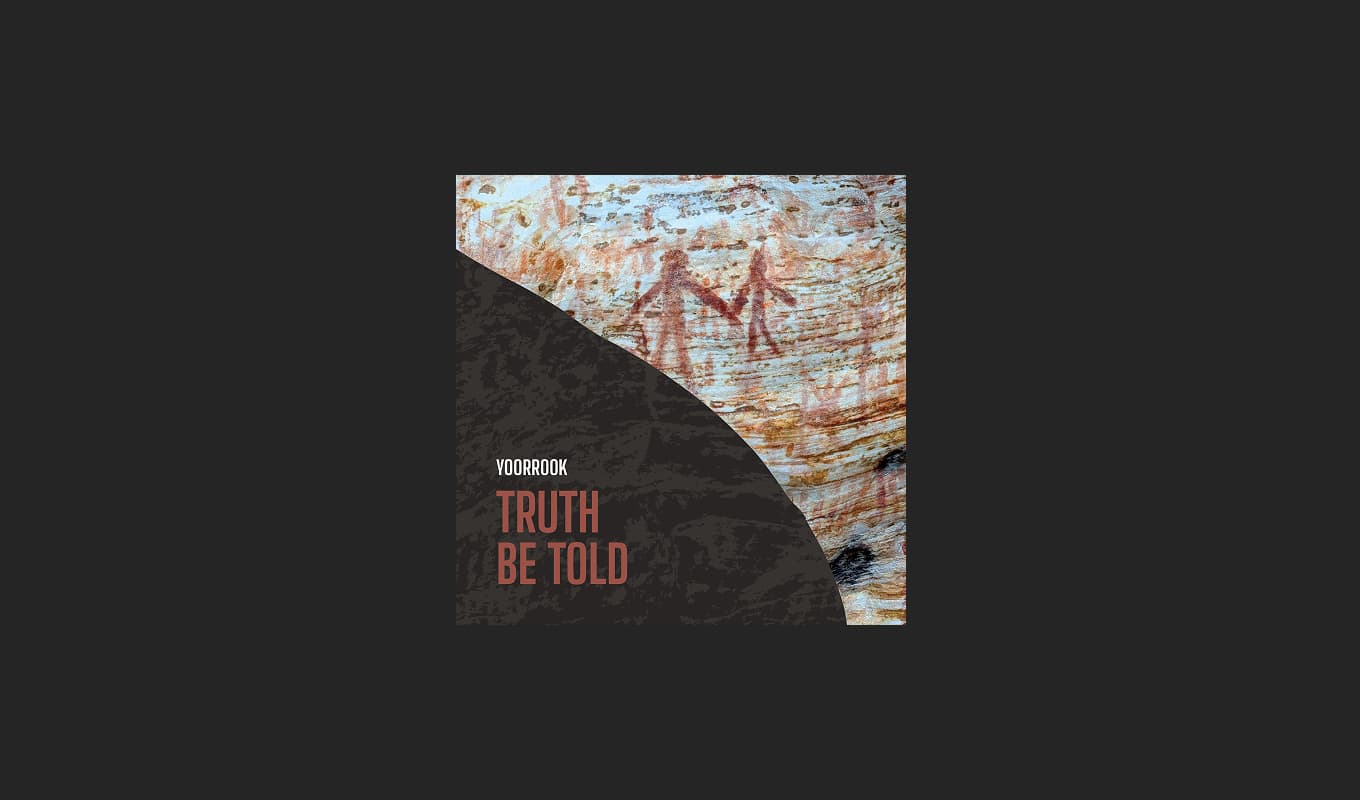
Truth Be Told
An official public record that documents First Peoples experiences since colonisation, preserves crucial testimonies for future generations and creates an enduring resource for education and understanding.
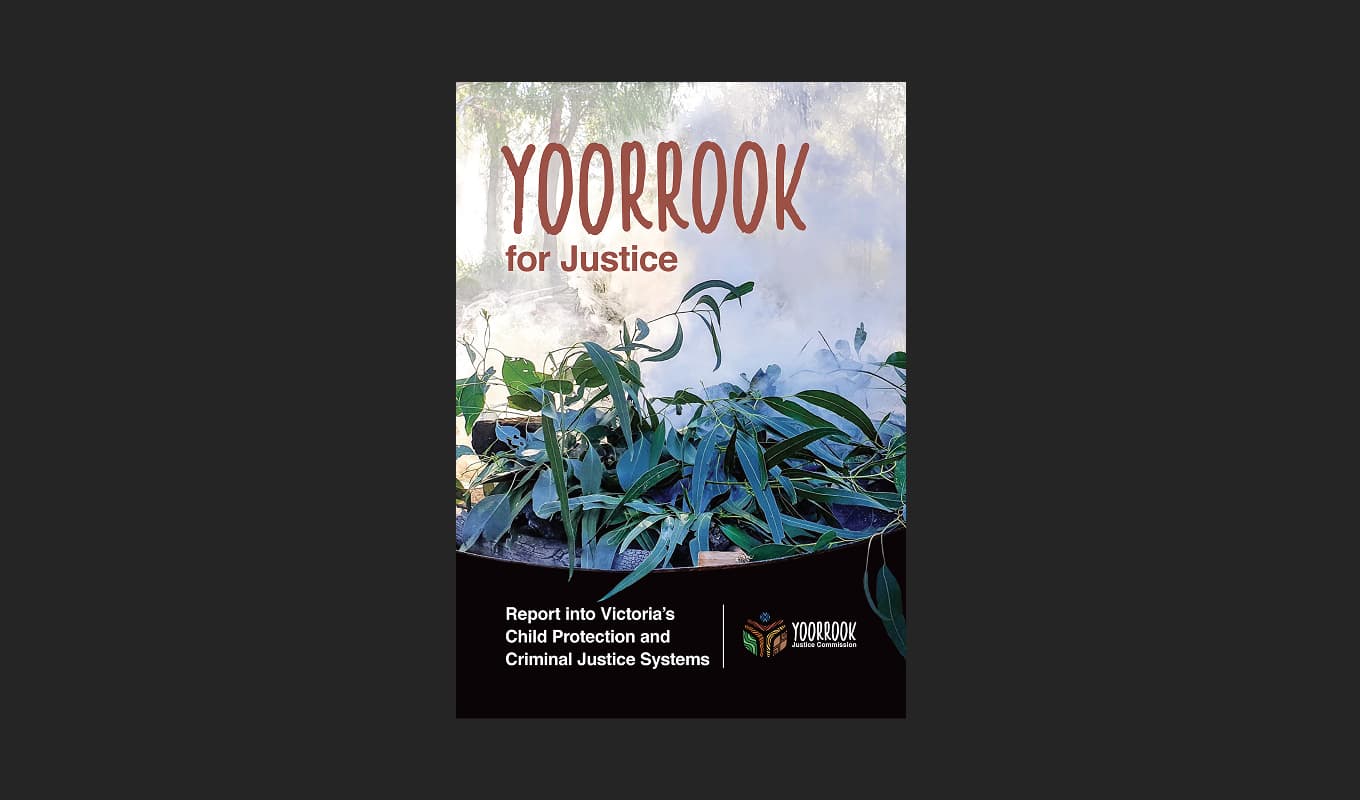
Recommendations for change
Yoorrook Justice Commission’s recommendations for truth-telling, justice, and systemic reform in Victoria.


